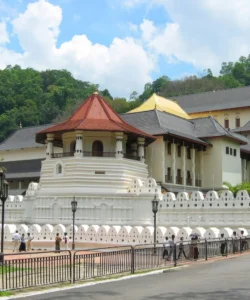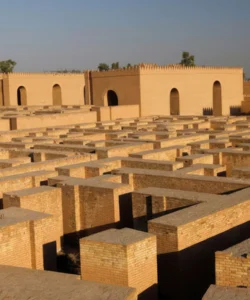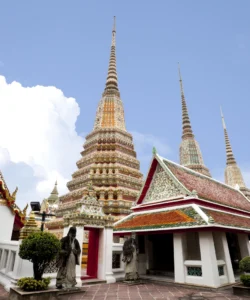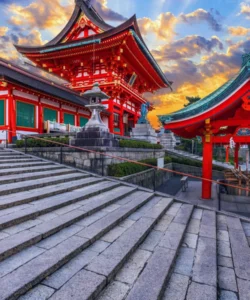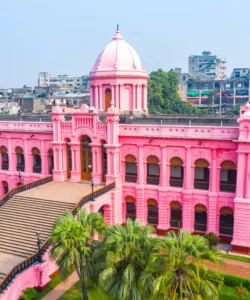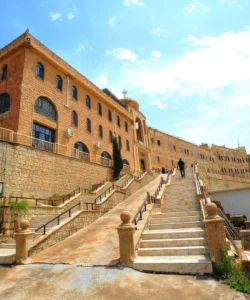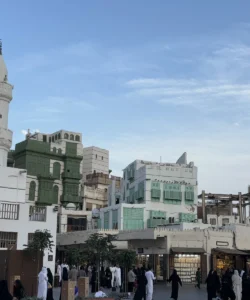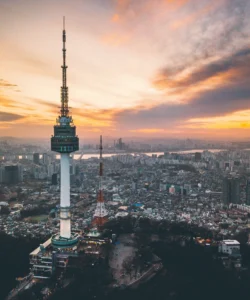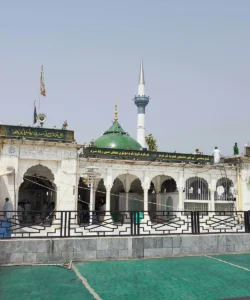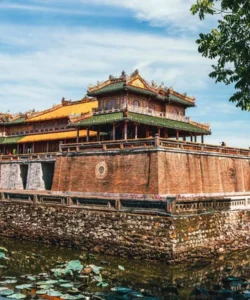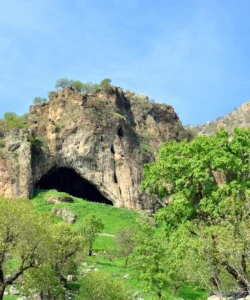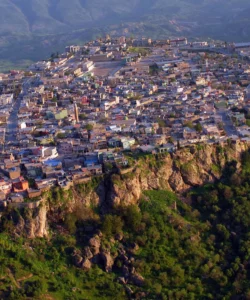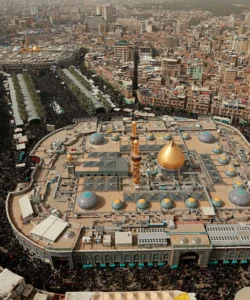The Imam Hussein Shrine is one of the most sacred sites in Shia Islam and a magnificent architectural complex located in the city of Karbala, Iraq. It is the burial place of Husayn ibn Ali, the grandson of the Prophet Muhammad, who was martyred during the Battle of Karbala in 680 AD. The shrine is a global center of pilgrimage and a profound symbol of sacrifice, justice, and resistance against tyranny.
Name: Imam Hussein Shrine (Arabic: حرم الإمام الحسين, Haram al-Imam Husayn)
Address: The shrine is located in the heart of the holy city of Karbala, in central Iraq.
How to Get There:
Travel to Karbala is currently extremely difficult and unsafe for general tourism due to political instability in Iraq. The following information is for historical context and is not a recommendation for travel.
- By Air: The closest international airport is Baghdad International Airport (BGW). A long and potentially dangerous road trip would be required to reach Karbala.
- By Road: In more stable times, a taxi, bus, or private vehicle from Baghdad to Karbala would be the most common way to travel. The journey typically takes 2-3 hours.
- Within the City: The shrine is a central landmark in Karbala. The shrine of Imam Abbas, the brother of Imam Hussein, is located a short walk away, and the area between the two shrines is a major pedestrian thoroughfare known as “Bayn al-Haramayn.”
- Entrance Fee: There is no entrance fee to the shrine.
- Dress Code: A strict dress code is enforced. Men should wear long pants and have their shoulders covered. Women are required to wear a head-to-toe robe known as an abaya and cover their heads. Modesty is paramount, and cosmetics are generally not allowed.
Landscape and Architecture:
The Imam Hussein Shrine is a stunning masterpiece of Islamic and Persian architecture, continually expanded and beautified over centuries.
- Golden Dome and Minarets: The most iconic features are the magnificent golden dome that sits directly over the tomb and the two towering, slender golden minarets that flank it. The dome is covered in shimmering gold, while the minarets are adorned with intricate calligraphy and Quranic verses.
- Central Tomb (Zarih): The tomb of Imam Hussein is housed in an inner sanctuary beneath the dome. It is enclosed within an elaborately designed metal-mesh structure known as a zarih, which is a masterpiece of craftsmanship, decorated with intricate patterns, precious stones, and calligraphy.
- Vast Courtyard and Iwans: The shrine complex is built around a vast, serene courtyard with a marble-tiled floor. The courtyard is surrounded by a series of arches and vaulted halls called iwans, which are decorated with vibrant blue and gold Persian-style tilework and mosaics.
- Mirror Mosaics and Calligraphy: The interiors of the shrine are a breathtaking display of artistry. They are covered in intricate mirror mosaics, crystal chandeliers, and detailed calligraphy, which reflect light and create a mesmerizing and sacred atmosphere.
- A Continuous History of Reconstruction: The shrine has a long history of destruction and reconstruction, beginning shortly after the Battle of Karbala. It was repeatedly destroyed by hostile rulers and rebuilt by devout followers and various dynasties, including the Safavid Empire, which contributed significantly to its architectural development.
- Bayn al-Haramayn: The shrine is connected to the Imam Abbas Shrine by a wide pedestrian walkway known as Bayn al-Haramayn (meaning “between the two shrines”). This area is a central part of the pilgrimage experience.
What Makes It Famous:
- Burial Site of Imam Hussein: The shrine is one of the holiest sites in Shia Islam because it is the burial place of Imam Hussein ibn Ali, the grandson of the Prophet Muhammad. He and his small band of followers were martyred in the Battle of Karbala, and their sacrifice is the central event in Shia religious history.
- Global Center of Pilgrimage: The Imam Hussein Shrine attracts tens of millions of pilgrims annually, particularly during the mourning periods of Muharram and Safar. The pilgrimage on the day of Arbaeen (the 40th day after Imam Hussein’s martyrdom) is one of the largest annual gatherings in the world, with more people attending than the Hajj pilgrimage to Mecca.
- Symbol of Sacrifice and Justice: The shrine is a powerful symbol of standing up for justice and truth in the face of overwhelming tyranny. For Shia Muslims, the pilgrimage is an act of spiritual defiance and a recommitment to the values for which Imam Hussein was martyred.
- Architectural Masterpiece: The shrine is celebrated for its breathtaking beauty and intricate craftsmanship, blending various Islamic architectural styles into a harmonious whole. Its golden domes, minarets, and mirror mosaics are a testament to centuries of artistic devotion.
- Hub of Religious and Intellectual Activity: The shrine is not just a tomb but also a vibrant center for religious and intellectual activity, with a library, museum, and educational programs that attract scholars and students from around the world.
Differences from Some Other Wonders:
- Living Place of Mourning: Unlike ancient wonders that are often revered as archaeological sites, the Imam Hussein Shrine is a living and active place of mourning and pilgrimage, with a constant flow of devotees. The religious rituals, processions, and emotional atmosphere are central to the experience.
- Connection to a Specific Historical Event: The shrine’s entire existence and significance are tied to a single, pivotal historical event: the Battle of Karbala in 680 AD. This direct and tragic link to its founding story is a unique aspect of its identity.
- Focus on a Family Lineage: The shrine is revered as the resting place of a member of the Ahl al-Bayt (the family of Prophet Muhammad), a lineage that holds immense spiritual significance for Shia Muslims. This family-based reverence sets it apart from many other religious sites.
- Annual Mega-Pilgrimage: The sheer scale of the Arbaeen pilgrimage is a defining feature. While other holy sites have massive crowds, the size, duration, and grassroots nature of this annual event are unparalleled.
- Profound Emotional Atmosphere: The atmosphere at the shrine is marked by a deep sense of devotion, mourning, and a collective emotional connection to the events of Karbala, which can be a different experience from visiting a more celebratory or purely historical religious site.
Imam Hussein Shrine in Karbala Photos:































